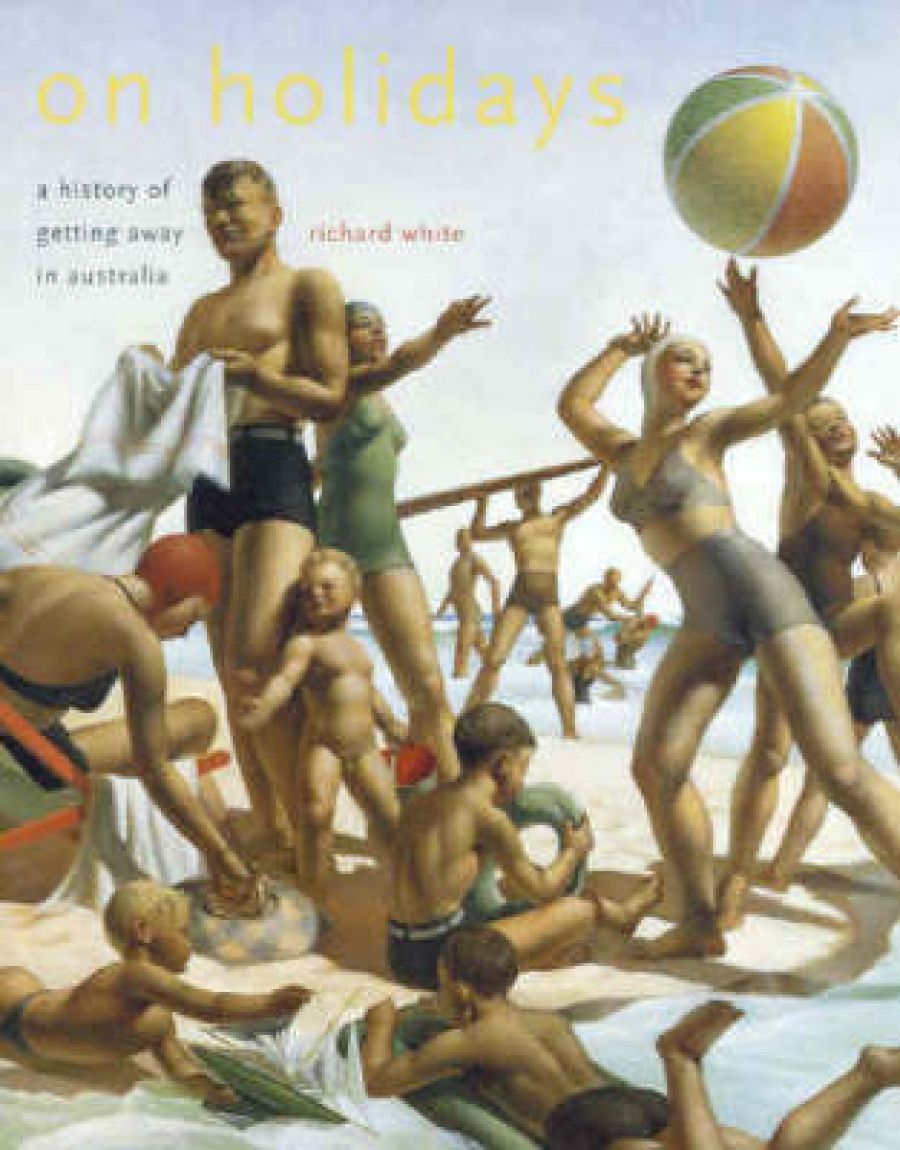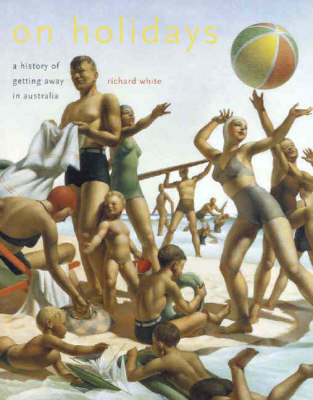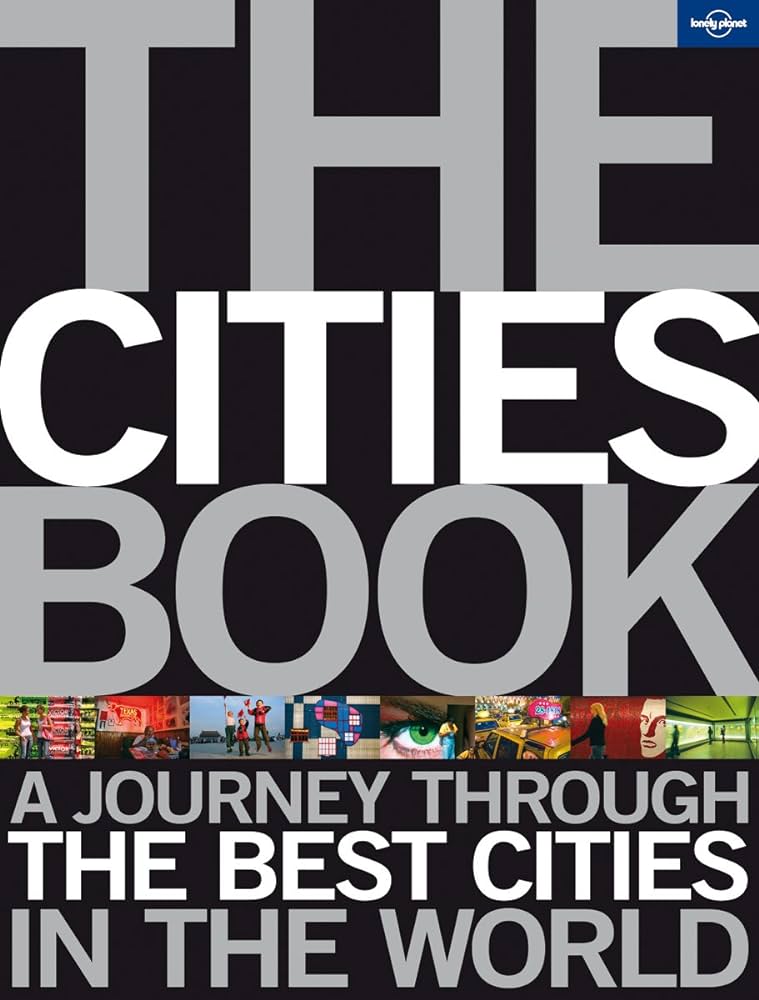
- Free Article: No
- Contents Category: Non-fiction
- Review Article: Yes
- Article Title: On the upswing
- Online Only: No
- Custom Highlight Text:
Despite the rhetoric of globalisation, it is impossible to buy an airline ticket online in the United States with a credit card issued abroad. When I needed a ticket from Boston to Washington last year, and after numerous unsuccessful arguments with airline websites and 1800 numbers, I dropped into the local Harvard travel agency. There was a welcome familiarity in discovering that it was a branch of STA, one of more than 400 branches operated around the world by the Australian-based company.
- Book 1 Title: On Holidays
- Book 1 Subtitle: A history of getting away in Australia
- Book 1 Biblio: Pluto Press, $32.95 pb, 250 pp
- Book 1 Cover Small (400 x 600):

- Book 1 Cover (800 x 1200):

- Book 2 Title: The Cities Book
- Book 2 Subtitle: A journey through the best cities in the world
- Book 2 Biblio: Lonely Planet, $79.95 hb, 428 pp
- Book 2 Cover Small (400 x 600):

- Book 2 Cover (800 x 1200):

The success of STA (now Swiss-owned) and of Lonely Planet, the Melbourne-based travel publisher, represents a particular Australian contribution to the explosion of travel in the past few decades. This is not surprising in the country that, as Richard White points out, helped to pioneer the holiday. The combination of distance, wealth and a certain commitment to leisure made us natural players in the development of the global travel industry. The ingredients that would make up modern tourism were already apparent by the end of the eighteenth century, combining, as White suggests, ‘the emphasis on the unique travel experience, the notion there were places where work was unnecessary, the conversion of culture into entertainment, the popularisation of exotic sexual allure and the commodification of escape’.
On Holidays grew out of an Honours seminar at Sydney University. White and his student associates have produced a fascinating introduction to the particularly Australian emphasis on holidays and escape. Theirs is a convincing account, although other modern societies, France for example, could tell equally plausible stories of their role in developing the romance of holidays. But they have produced a book that illuminates much about Australian social history, and is particularly strong on how technological advances – railways and cameras, in particular – helped to create the contemporary holiday. Due, perhaps, to scholarly prudery, they hardly develop the idea of ‘exotic sexual allure’, but then Australians are more likely to seek this by fleeing abroad, and the emphasis of the book is clearly on domestic travel.
Most of us have used at least one of the more than 600 guidebooks produced by Lonely Planet, with their detailed description of almost any conceivable destination, and their relentless search for the cheapest hostel and food market. With a pool of authors who, ostensibly, have been everywhere, Lonely Planet seemed particularly well placed to produce a coffee-table book whose gimmick is the rating of world cities, producing a list of 200, headed by Paris and ending with Ashgabat. As the folk at STA will tell you, searching their computers for Turkmenistan Airlines (a two-star airline, says one website, hopefully), Ashgabat is the capital of one of the world’s most megalomaniac dictatorships, but it is also, it appears, a city which is green, safe and near ‘one of the most colourful and fascinating markets on earth’. How do you rate cities? Lonely Planet ran an online survey to come up with their list, but their vagueness about methodology suggests a need for a certain degree of geographical correctness, of which more later. The top five, as they acknowledge, is predictable: Paris, New York, Sydney, Barcelona and London. There is no information about where the respondents lived, but a cynic might suggest this had some bearing on why Christchurch rates number 105, between Quito and Glasgow, but neither Zurich nor Geneva makes the list. It may also have helped Melbourne hit number eleven, ahead of both Rio and Berlin.
But the surprises are Third World cities, with places such as Agadez (Niger) and Madang (Papua New Guinea) making the cut. Indeed, one of the pleasures of the book is the discovery of cities that are rarely covered in newspaper travel supplements. Some massaging of the data may have been necessary, but this inclusiveness makes for a more interesting book, one that is beautifully illustrated and manages to combine a great deal of information with a certain charming eccentricity.
Much information and opinion are packed into each entry. While some of it becomes repetitive – it can be assumed that large cities in poor countries will have problems with traffic and crime – there are some interesting insights. The tendency to travel agent-speak – Hobartians, we are told, are physically active, cultured and eat well, while the Kazakhs of Almaty ‘are people on the upswing’ – is balanced by some attempt to suggest the problems of each city and the broader political context.
There are some interesting dilemmas once one starts thinking about rating cities based on unspecified criteria. There is little concern here for size: several of the ‘cities’ – Apia in Samoa, or Ushuaia in southern Argentina – are better described as towns. Australia and New Zealand are over-represented, with seven entries, to China’s four (including Hong Kong and Macau), while France only rates three, missing out obvious choices such as Lyons, Avignon and Toulouse.
But how does one compare the cities of the old and new worlds, of rich and poor countries? The current explosion of urbanisation means that some of the largest urban agglomerations don’t make the list, and only a brief supplement by Tony Wheeler, co-founder of Lonely Planet, brings in such huge cities as Jakarta, Karachi and Tehran. The problem is that our vision of what constitutes a city is heavily shaped by a particular Eurocentrism, and other than a few established centres in Latin America, such as San Cristobal de las Casas in Mexico (number eighty-six), the European model is hard to find in the developing world.
It is difficult to find much that is charming in overcrowded metropolitan sprawls such as Manila, Dhaka and Nairobi, but Lonely Planet’s writers have done their best. Like all good travel books, this leads us to places we may never visit, and its determination to be geographically balanced makes for interesting reading. We will all quibble: I doubt that the United States really deserves fourteen entries, and I would have included San Diego, a much-underrated place. In the end, the odd inclusions make the book more interesting, but I did grimace at Milan’s exclusion. I would have put it well in the top hundred, ahead of such inclusions as Memphis and Nuuk (Greenland), with its population of 16,000.
As White suggests, Australians helped pioneer the concepts of the weekend and paid holidays, and there is a long-standing tradition of accepting lower wages in return for sufficient leave to pursue the romance of the holiday away. In the name of economic management, the current government is winding back these entitlements, and White suggests that leisure is increasingly distributed according to social and economic position, ‘which is how it was about a quarter of a millennium ago’. He may be too pessimistic, but it is easy to imagine a future in which Australia increasingly becomes a tourist destination staffed by workers whose earnings don’t allow them to visit most of the cities identified by Lonely Planet.


Comments powered by CComment